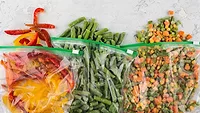A Beginner's Guide to FDA Food Contact Materials Regulations

Packaging is the first thing a consumer sees when purchasing food products. An appealing color scheme or design can make a difference in a buyer’s mind, but the average shopper rarely gives a thought to anything beyond appearance and basic function. On the other hand, materials suppliers and packaging manufacturers must think beyond aesthetics, and take safety into consideration as they determine which packaging materials contact food and beverages.
Plastics, paper and other packaging materials bring many benefits to the food supply chain, including sterility and prolonged shelf life. However, there is the potential for transfer of chemicals from the packaging to the food, which is why FDA regulations surrounding food contact materials exist. Understanding this legislation is key to creating effective, safe and legally compliant packaging.
The Beginning of FDA Regulation of Food Contact Materials
The first food and drug legislation in America was the 1906 Food and Drug Act, followed by the Federal Food, Drug and Cosmetic Act (FFDCA) in 1938. Though neither included requirements relating to food contact materials, they laid the groundwork for eventual food contact legislation.
It wasn’t until 1957 amendment to the FFDCA that food contact substances came under the scope of FDA regulation. Section 201(s) of FFDCA, the aforementioned amendment provides the legal definition of a food additive: “any substance the intended use of which results in or may reasonably be expected to result in its becoming a component of food.” In other words, a substance that migrates from food packaging into the food itself is considered an indirect food additive.
Three Routes to FDA Compliance
In order to bring food product packaging to market, it needs to be FDA compliant, and there are three ways to achieve compliance. The route for any particular pack is determined by the materials used in the packaging itself.
Looking for quick answers on food safety topics?
Try Ask FSM, our new smart AI search tool.
Ask FSM →
- The first route to compliance applies to the many established food contact materials, which have existing FDA regulations specific to them. These regulations are laid out in 21 CFR Parts 170-199.
- For new food contact substances, manufacturers must register the product with the FDA. This typically requires a Food Contact Notification (FCN), but for higher or lower exposure materials, a Food Additive Petition (FAP) or Threshold of Regulation Submission (ToR) may be necessary.
- In some cases, packaging manufacturers may be able to claim that the scope of the FFDCA does not cover the substance utilized in packaging, which would mean that the application is exempt from FDA approval.
Route One: 21 CFR Parts 170-199
Parts 170-199 are the FDA regulations that cover almost all classes of food packaging, including:
- Plastics
- Polyolefins, polyesters, polystyrene, polyamides and many more
- Paper and cardboard
- Polymeric coatings
- Additives
- Adhesives
The majority of food contact packaging are made with the materials listed above, all of which are classified as Food Contact Substances and covered by one of the regulations found in parts 170-199. These regulations are particularly relevant when working with long established materials. For example, polymer producers use these regulations when placing conventional materials on the market, and packaging manufacturers use them when looking to create compliant final packaging with already certified raw materials.
21 CFR is laid out by part, as follows:
- 170-173 - Direct Food Additives
- 174 - Indirect Food Additives: General
- 175 - Indirect Food Additives: Adhesives and Components of Coatings
- 176 - Indirect Food Additives: Paper and Paperboard Components
- 177 - Indirect Food Additives: Polymers
- 178 - Indirect Food Additives: Adjuvants, Production Aids and Sanitizers
- 181 - Prior-sanctioned Food Ingredients
- 182-186 - Substances Generally Recognized as Safe
- 189 - Substances Prohibited from Use in Human Food
- 190 - Dietary Supplements
Each part is further sub-divided into sections. Part 177, for example, is broken into sections that cover different types of polymers and regulations surrounding them. Each section then lists definitions of material types, permitted additives, specifications, test methods, and end-use restrictions for each. With knowledge of how 21 CFR is broken down, there are a few pieces of advice for manufacturers to keep in mind while working toward FDA compliance through this particular route.
How Manufacturers Can Effectively Work with 21 CFR Parts 170-199
- Read the regulations very carefully.
- Take particular care when trying to support the use of a substance in a plastic (or any other application) based on a cross-reference to a listing in a separate regulation. Make sure the original approval for the substance will cover its real world application.
- Research end use restrictions. Not all materials are suitable for use with all types of food under all temperatures.
- Have copies of Tables 1 and 2 of Regulation 176.170 easily accessible for quick reference. Table 1 defines different types of raw and processed foods, and Table 2 defines conditions of use at various temperatures. These tables are widely referred to in other FDA regulations.
- Be aware of possible restrictions placed on approvals and be prepared to communicate them to ensure that all stakeholders can understand and respect them.
Route Two: Food Contact Notification (FCN) Program
The FCN program was introduced by the FDA’s Modernization Act in 2000. It created a formal process for the registration of food contact materials. A clearly defined package of information is required for application, and the FDA has a 120-day time period to raise objections. If the FDA does not object, the packaging materials are automatically legal.
Who Applies for FCNs?
Typically, the producer of the food contact substance would apply for FCN approval for a new food contact substance or when seeking to use an approved substance in a new application. Users of food contact substances, such as packaging managers, usually don’t apply for FCNs and tend to rely mostly on pre-approved substances.
What is sent in for a Food Contact Notification?
- Migration study
- A measure of how much of the substance migrates into foods using the FDA’s standard protocols.
- Estimate of dietary exposure
- Calculated by using the FDA’s standard dietary exposure model to estimate amount of the substance in the daily diet.
- Toxicological Review
- Depending on the level of dietary exposure, the FDA will ask for differing levels of toxicological information.
- For the highest levels of exposure, they will still ask for a Food Additive Petition (FAP).
- Environmental Impact Assessment
The FDA offers a pre-notification consultation, either by phone or in person, to help iron out minor blemishes before an FCN is submitted. The turnaround time for the review process is very quick. If an FCN is granted, it will be published in the FDA inventory.
After a successful FCN application, the onus for ensuring compliance moves to the packaging managers, who must focus on gathering food contact statements for FCN substances, which might be linked to additional restrictions, related to types of food and temperature. If additional restrictions are found, they must be followed and communicated down the line of production, to packaging managers, packers and fillers, for example. Packaging manufacturers must also honor the fact that FCN approval is proprietary; materials must be produced by the approved entity only, or else a new FCN will be required.
Route Three: Exemptions from FDA Regulation
There are a number of widely used packaging materials that are exempt from the FDA regulations, and there are a number of ways to argue exemption. These include prior sanction, substances generally recognized as safe, the no migration exemption, the basic resin doctrine, the mixture doctrine, functional barriers, the threshold of regulation and the housewares exemption. The three most common ways are appealing to prior sanction, falling under substances generally recognized as safe and the no migration exemption.
Prior Sanction
Before food packaging was brought under the Food and Drugs Act in 1958, the FDA had previously approved many inquiries from manufacturers regarding suitability of food substances or packaging. Any substance that received a letter of approval before 1958 qualifies for prior sanction. A well-known example of a prior sanction substance is PVC. Care should be taken with this approach, though, as many other sections of the FDA rules require certainty of the safety of a product before placing it on the market.
Substances Generally Recognized as Safe
A list of safe substances can be found in 21 CFR Parts 182, 184 and 186. Direct food additives that are covered by this exemption are also acceptable in indirect food contact applications for packaging materials. Examples of such precleared substances include zinc oxide and zinc stearate. However, it is worth noting that options also exist for the self-determination of Generally Recognized as Safe (GRAS) status.
No Migration Exemption
If a packaging substance is not reasonably expected to become a component of food, then it does not meet the FDA definition of a food additive and could fall outside the scope of their authority under the so-called No Migration Exemption.
The level at which no migration is considered to have taken place is contentious. However, under the Ramsey Proposal, the threshold level is considered less than 50 parts per billion (ppb), except for high exposure applications like milk and carbonated soft drink bottles. For these, a 10 ppb limit applies. The no migration exemption does not apply to substances that pose special toxicological concerns, such as heavy metals or carcinogens, or if the substance poses toxic reactions at levels of 40 ppb or lower in the diet of humans or animals.\
Demonstrating that a substance falls under no migration requires testing through diffusion modelling and assumptions of 100% migration calculations to determine the maximum amount of a substance that could pass into the food. There is no need to notify the FDA of such testing as long as the packaging ultimately meets the criteria of the no migration exemption, but it is important to ensure a watertight approach.
Food packaging legislation can be complicated, and while this introduction to the three routes to FDA approval can help organizations navigate regulations in the United States, there are complex differences from country to country that call for careful consideration. Whether an organization is well-versed in this type of legislation or is still learning the ropes, expert analysis can be helpful. With careful testing and consultations, a third-party laboratory can help by clarifying regulations, evaluating packaging materials and ensuring compliance.
This article was originally posted on www.packagingstrategies.com.








